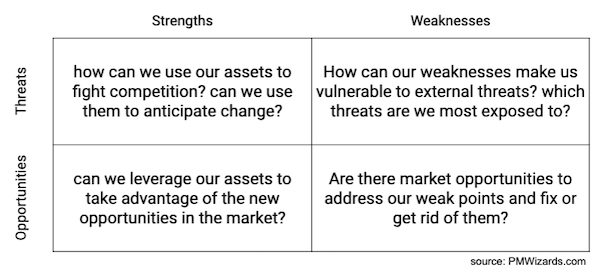Looking outside and inside to define targets and strategies
SWOT is an analysis tool to support strategic planning. It is an acronym for Strengths & Weaknesses (internal factors), Opportunities & Threats (organization external factors).
SWOT has often been done in this order: first examining strengths, then weaknesses, opportunities and finally threats.
TIP: Follow the TOWS order: start with the external factors, Threats and Opportunities, and then proceed to the internal ones, Weaknesses and Strengths. This is why we prefer to call it “TOWS analysis”.
TOWS is an analytical exercise that can be done in phases: first, individually (preparation phase) and then in group (discussion phase).
For a meeting to succeed, it is important to foster a free flow of ideas between participants. The safer people feel in the environment, the more willing to contribute they will be. Now let’s look at another approach that combines dimensions:

As you can see in the diagram, some really interesting themes pop-up when you combine the four elements into questions to drive discussions.
TIP: _To create a safe environment, avoid criticism that is not constructive, prefer to offer additional perspective in a non-judgmental and non-confrontational manner.
Do not forget to prepare the questions for the TOWS Analysis in a Strategy Meeting to make it more effective.
Ideally any analysis session should start with a PESTEL analysis where the external context is analysed in depth.